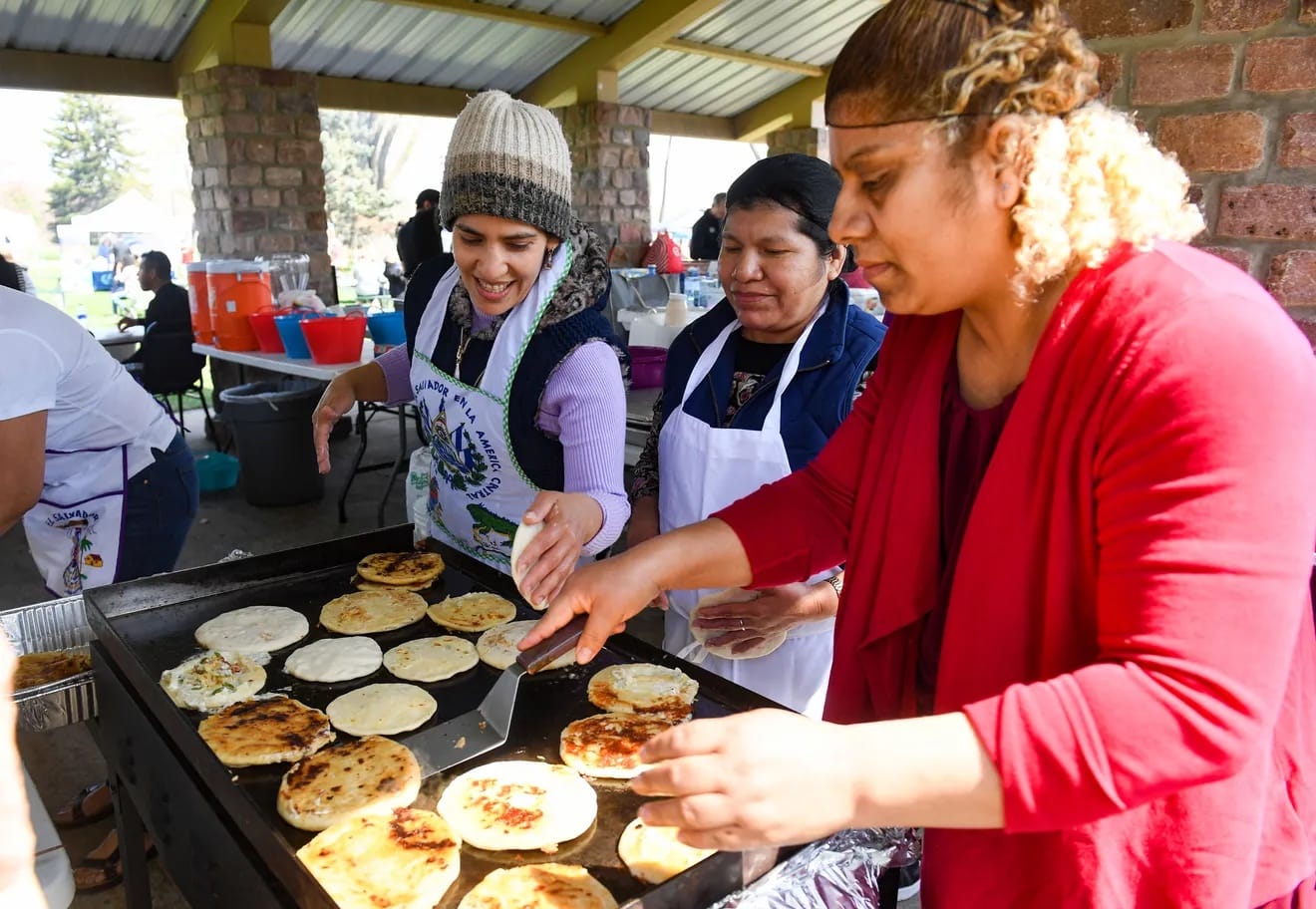South Dakota’s Hispanic population more than doubled over the past 12 years and now helps keep many small towns vibrant, a trend seen in other rural areas of the U.S., according to census data and experts.
There were an estimated 44,581 Latino individuals living in South Dakota as of 2022, or nearly 5% of the state population, according to the U.S. Census Bureau.
That base number is more than double the 2010 census count (22,119, or 2.7%) and more than four times the 2000 count (10,903, 1.4%). Hispanics are the third-largest racial/ethnic demographic group in South Dakota behind non-Hispanic whites (84.2%) and Native Americans (8.5%).
While Hispanic immigrants traditionally clustered in urban gateway cities, there has been a push to the rural Midwest as companies build food processing and manufacturing plants in smaller agricultural communities with lower operating costs.
Population growth: South Dakota on track to top 1 million by 2030 after ‘significant’ growth
This creates a need for workers and can help bolster population numbers in rural counties that have seen declines in recent decades, according to South Dakota State University professor and state demographer Weiwei Zhang.
“Much of this is driven by job opportunities,” she said. “A few family members find employment in the community, and then more relatives move there through chain migration.”
Nationally, the Latino population increased 23% from 2010 to 2020 to reach a total of more than 62.1 million in the United States. The overall population growth during that time was 7%.

‘This business is something beautiful’
About one-third of all Latinos living in the U.S. were born outside the country, according to the Pew Research Center, with Mexico the most common place of origin (61.5%).
Diana Vianey Pineda, a 30-year-old native of Guerrero, Mexico, came to South Dakota in 2015 to work at the Dakota Provisions meat processing plant in Huron. She was part of an influx that gives Beadle County the highest percentage of Hispanic residents in the state at 14.3%, or 2,741 residents, up from just 155 in 2000.
Other counties in the state’s top five of Hispanic population percentage are Aurora (8.0%), Grant (6.4%), Minnehaha (6.1%) and Marshall (5.9%).
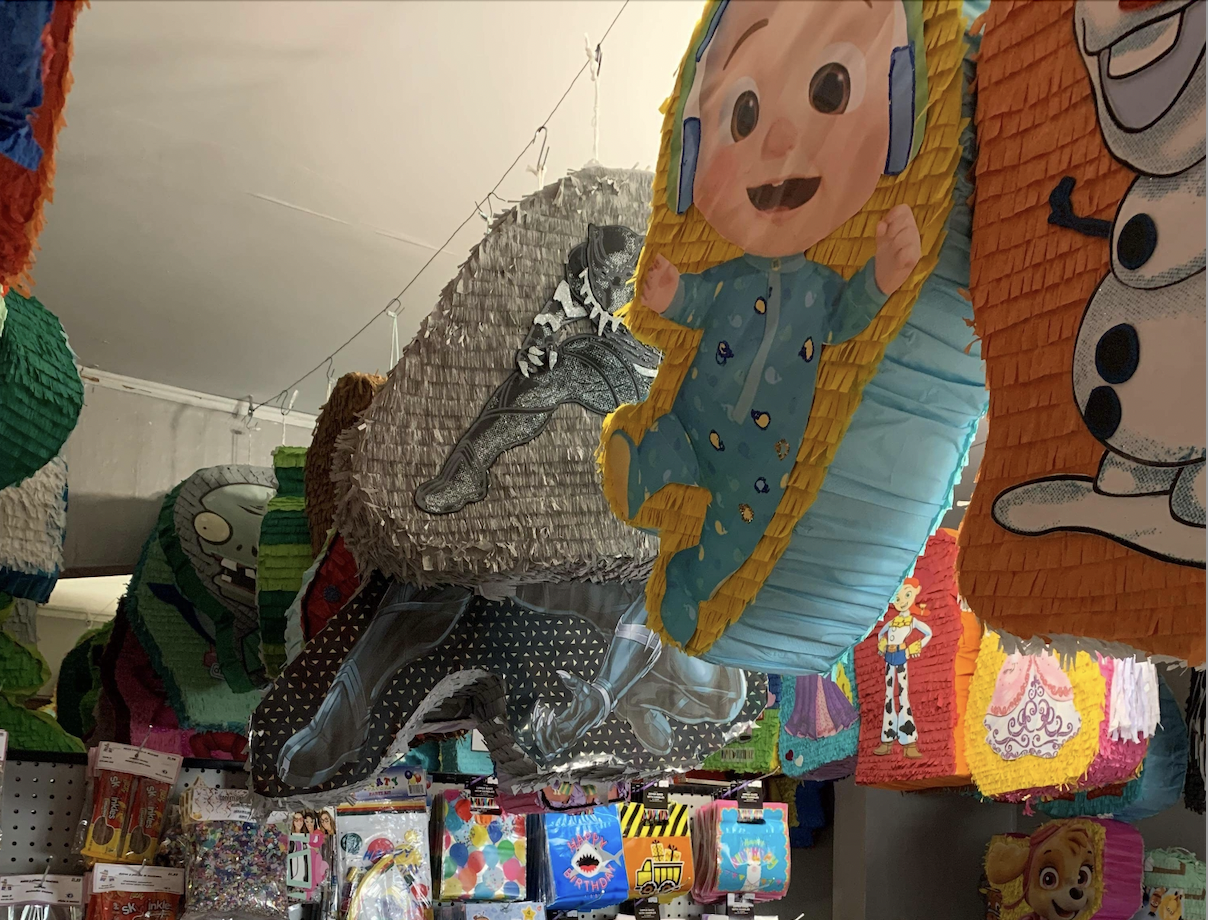
Along with her husband, who is also from Mexico, Pineda in 2021 started her own piñata business, Piñatas La Mexicana, in Huron. Family members have helped operate the business so far. The goal is to become immersed in the community and find financial stability after starting out at the packing plant, she told News Watch.
“We had a party and couldn’t find anyone to make the piñata for us,” said Pineda, referring to a decorated container, often made of papier-mâché, filled with candy and broken up by party goers with a stick. “I decided to make one, and my family liked the results, so we decided to start selling them to the public.”
Pineda, whose interview with News Watch was done through translation software, said she is taking English classes so she can better communicate with her clients and expand the business, which has branched out with appearances in Sioux Falls and the South Dakota State Fair.
“This business is something beautiful and we are moving forward,” she said.
Immigrants help rejuvenate Huron community
For South Dakota communities shrinking from natural change (more deaths than births) and negative net migration, one of the solutions is to try to foster more international migration to offset those trends.
A prime example is the city of Huron, which lost 1,300 jobs when the Dakota Pork plant closed in 1997, around the same time NorthWestern Energy moved its corporate headquarters to Sioux Falls. Huron University was experiencing financial turmoil and officially closed in 2005.
Terry Nebelsick, a former principal and superintendent of the Huron School District who retired in 2021, told News Watch that the district had 2,400 students when he arrived in 1994.
“Seven years later we got down to 1,800 students, and the projection six years after that was 1,200 students. The community had to make a decision.”
Discussion among agricultural groups, city leaders and the Hutterite colonies led to the Dakota Provisions turkey plant opening in 2006. It created jobs that spurred incoming migration and refugee efforts, including an influx of Karen (pronounced kah-REN) refugees from Myanmar (formerly Burma) in southeast Asia.
‘When kids grow up together, they don’t see color’
Beef jerky maker Jack Link's also expanded operations at its plant in Alpena, about 20 miles southwest of Huron, contributing to the wave of incoming new residents.
Huron’s school district enrollment is now just under 3,000, 58% of whom are minority or international students. Hispanic students make up 30% of the student body, and Karen students were named high school homecoming king and queen in 2022.
One of the challenges was to make sure that new residents found not just employment but opportunities to become part of the community. That meant lobbying the South Dakota Legislature successfully for more state aid to fund English-language learner (ELL) programs by tying them to economic development, according to Nebelsick.
When it became clear that there were elementary schools with mostly low-income or immigrant/refugee students, school officials proposed a $22 million bond measure for three new elementary schools that would put all kindergarten and first graders in the same building, with a separate school for second-third graders and fourth-fifth graders.
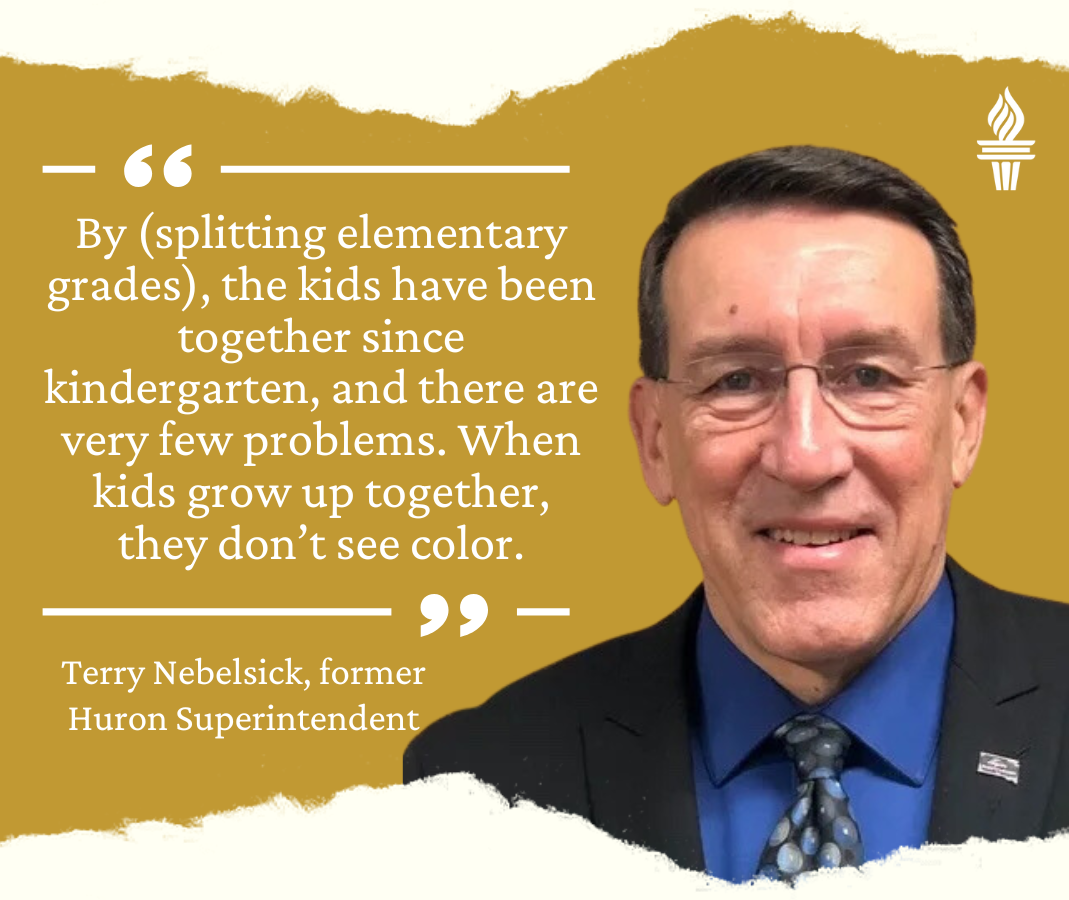
The 2013 measure needed 60% approval to pass and ended up with 71% of the vote.
“By doing that, the kids have been together since kindergarten, and there are very few problems,” said Nebelsick. “When kids grow up together, they don’t see color.”
Ministry helps immigrants with legal, language hurdles
South Dakota’s largest county, Minnehaha, had more than 12,000 Hispanic residents in 2020, according to census data, or 6.1% of its population. That was up from 4.1% in 2010 and 2.1% in 2000.
Those numbers are probably lower than the actual count, said Matthew Tschetter, executive director of Caminando Juntos, a Sioux Falls-based ministry sponsored by the Aberdeen Presentation Sisters.
The organization aims to help Latino immigrants integrate into their communities with legal services, housing assistance and English language classes.
South Dakota growth: As population plummets, Hyde County civic leaders seek solutions
Tschetter, who was born in Colombia but grew up in Freeman, said that there could be “from 5,000 to 8,000 or more Hispanic folks who are undocumented, living and working in Sioux Falls and the surrounding area.”
Undocumented residents are included in the census but are traditionally undercounted, according to U.S. Census Bureau studies.
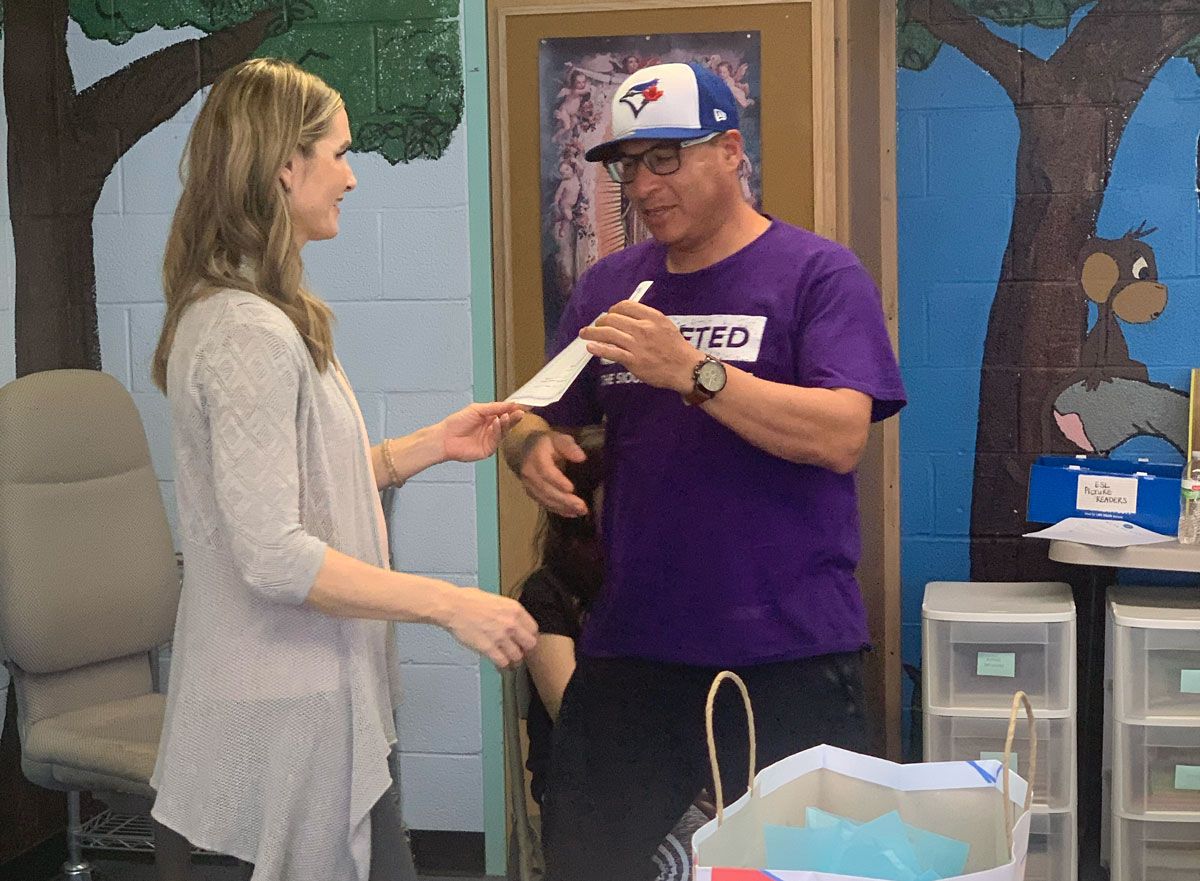
The most prevalent countries of origin for Hispanic immigrants in Sioux Falls are Guatemala and Mexico, said Tschetter. Many of them need help with paperwork for county or state services or federal immigration proceedings such as family reunification.
Caminando Juntos, which translates to “walking together,” started in 2002 in response to rapidly increasing Latino populations in South Dakota. In addition to legal guidance, staffers provide English interpretation for interactions with government agencies or potential employers.
“We live in a place where most everything in statewide government is English-only, but we try to serve as a buffer or go-between when we can,” said Tschetter. “The welcoming part that we do really works at showing the migrant that they have dignity, that we will treat them with dignity and help them with whatever we are able to do.”
Hispanics’ median age much lower than whites in S.D.
As state demographer, Zhang is reluctant to make demographic population projections because of shifting variables such as economic factors and state and federal immigration policies.
But signs point to a continued trend of Hispanic growth in South Dakota:
The median age for Latino males in the state (23.4) is significantly lower than white males (40.4), with a similar disparity for Latino females (24) and white females (41.9). Nationally from 2018-20, Hispanic women had the highest fertility rate (64.8 births per 1,000 women ages 15-44) among demographic groups, with white women at 55.3.
Evidence of this growth can be seen in the Sioux Falls School District, the state’s largest, which went from 3% Hispanic in 2000 to 7.1% in 2010 and 14.7% in 2022.
As more immigrants are drawn to manufacturing jobs, Zhang noted that communities can reach a “tipping point” where the level of education or job skills potentially becomes a drain on the community in terms of social services or other resources.
In South Dakota, 15% of Hispanic males have a bachelor’s degree or higher, compared with 31.6 for white males. For females, the percentages are 27.8 for Hispanics and 35.3 for whites.
The median household income in South Dakota is $57,045 for Hispanics and $69,702 for whites.

Immigrants can provide ‘demographic lifeline’ to towns
For rural communities struggling with sinking populations, however, Latinos can provide a “demographic lifeline” to slow the rate of decline, said Daniel Lichter.
He earned a sociology degree from SDSU in 1975 and now teaches public policy and sociology at Cornell University.
Lichter published a paper with colleague Kenneth Johnson in 2020 analyzing immigration and Hispanic population growth in mostly rural states. They found that though the influx of immigrants was “usually insufficient to reverse population declines in historically depopulating counties,” stabilization of populations and institutions did occur.
“New Hispanic immigrants may not only revitalize rural economies, but keep schools, churches and hospitals open that otherwise may have closed,” said the study.
Lichter called it a “demographic turning point” in America, with the politically fraught issue of border security sparking “antipathy toward Hispanics or other immigrant populations, especially among rural voters.”
But there are signs of hope in South Dakota, as seen by Kristi Hine, publisher of the True Dakotan newspaper that serves Wessington Springs and Alpena in Jerauld County.
‘It’s not just us and them. They’re part of this community.’
Hine, who is bilingual, provides interpretation for Hispanic families, many connected to the Jack Link's plant in Alpena, when they meet with local schools or government agencies.
She moved to South Dakota and bought the newspaper in 2015 after living in Las Vegas and Phoenix.
“There were growing pains for sure,” Hine said of the rising Hispanic population in Alpena and Wessington Springs. “But over the past decade of being that go-between the community and Spanish-speaking families, I’ve seen more acceptance.”
She was struck by the story of Wessington Springs High School student Estrellita Cardona, who was diagnosed with leukemia in early 2023 while preparing for her quinceanera, a cultural celebration in the Hispanic tradition for girls turning 15.
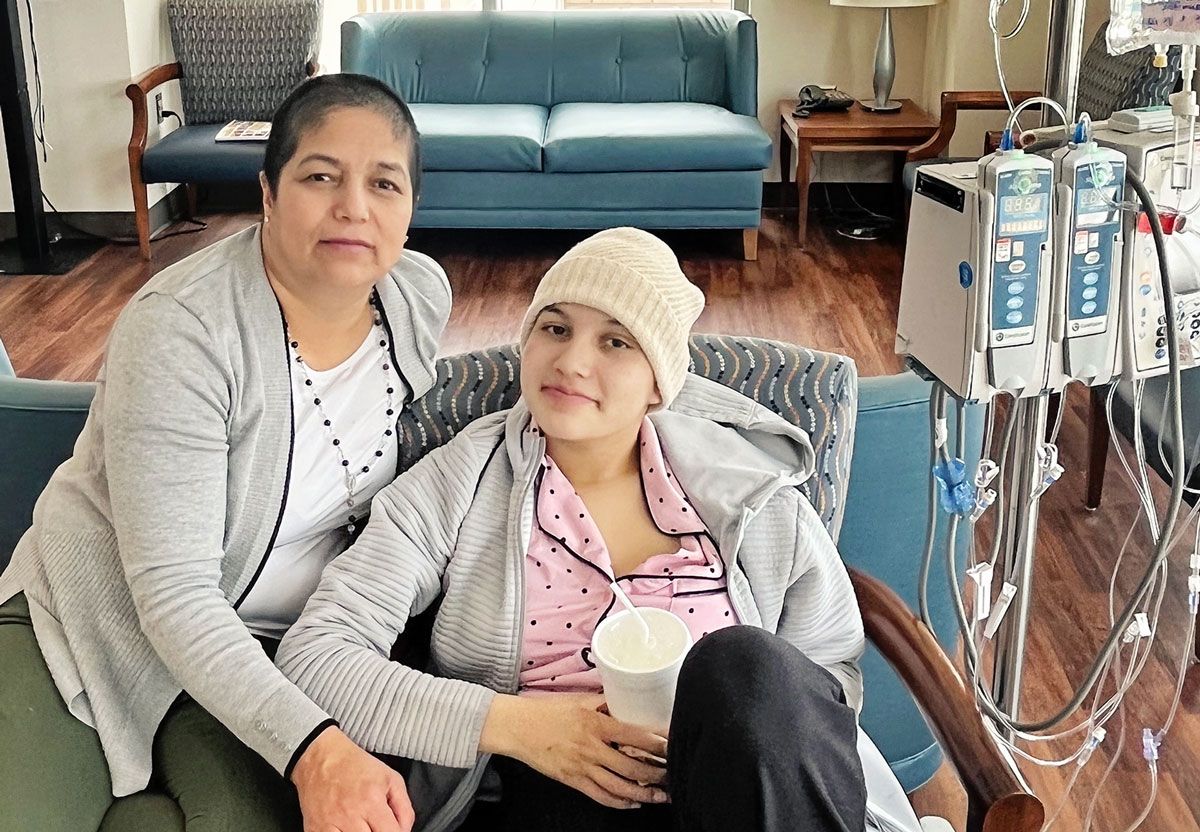
Her classmates rallied around her by launching “Team Estrellita” and hosting fundraising events to help the family as Cardona received treatment at Sanford Children’s Hospital in Sioux Falls.
When she died in April, the family called Hine and asked her to spread the word to their daughter’s classmates and the rest of the community, who flocked to an all-night wake service at the Alpena Community Center to pay their respects.
“It was really beautiful to see everyone come together to support the family,” said Hine. “I don’t think that would have happened 10 years ago. It’s not just us and them. They’re a part of this community. It’s a sign of how far we’ve come.”

